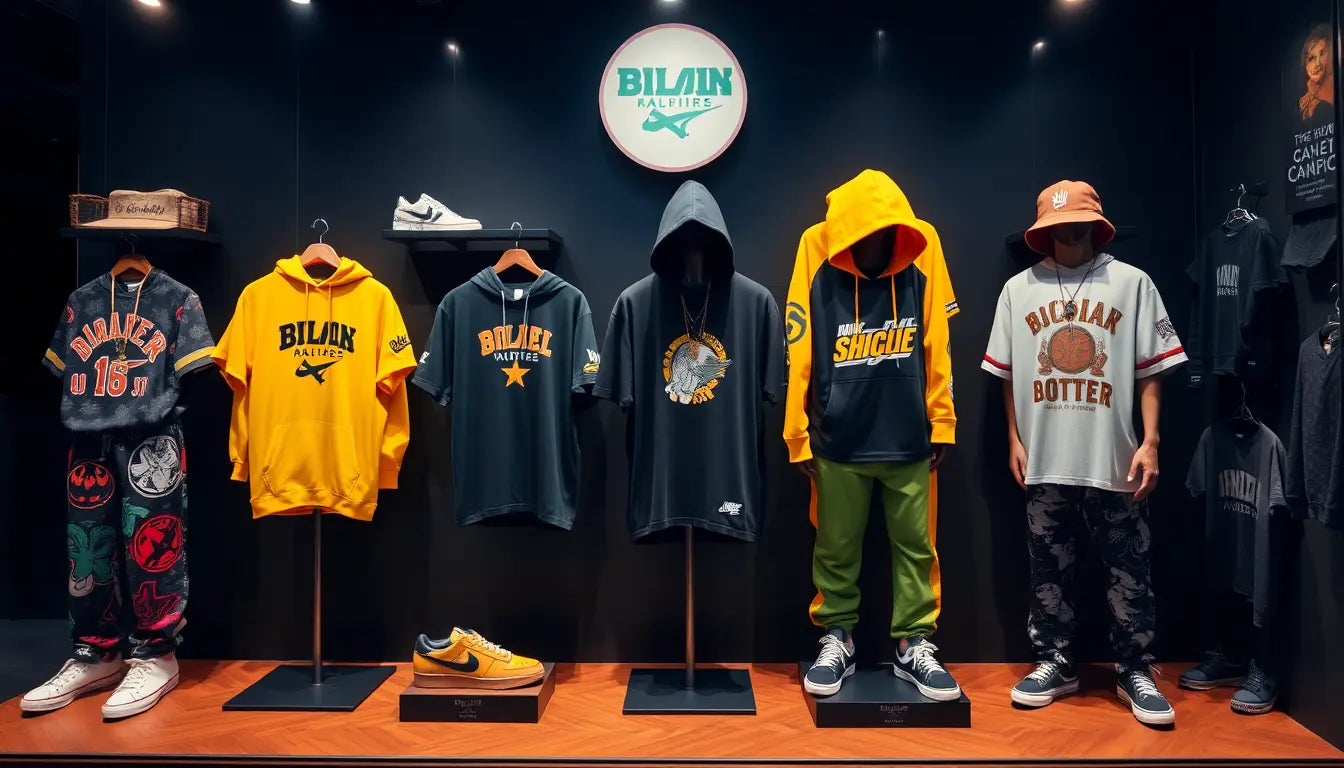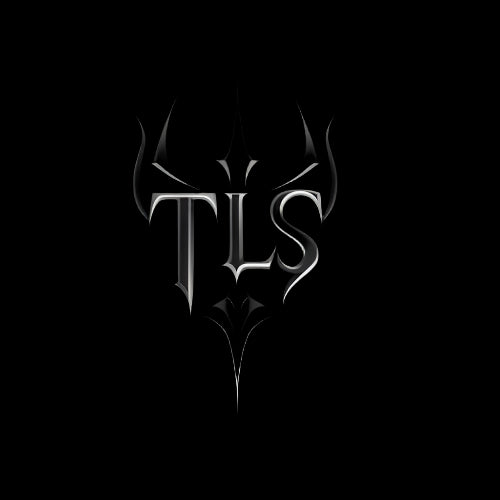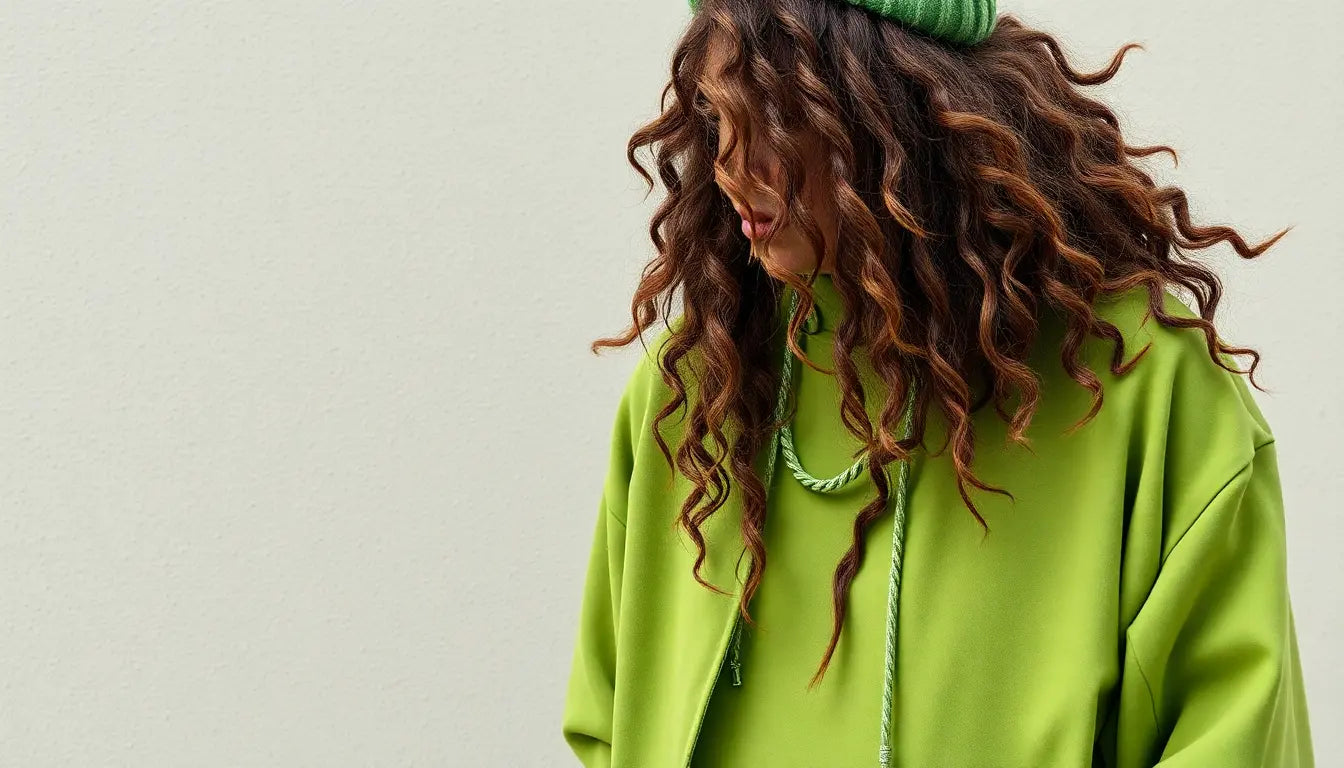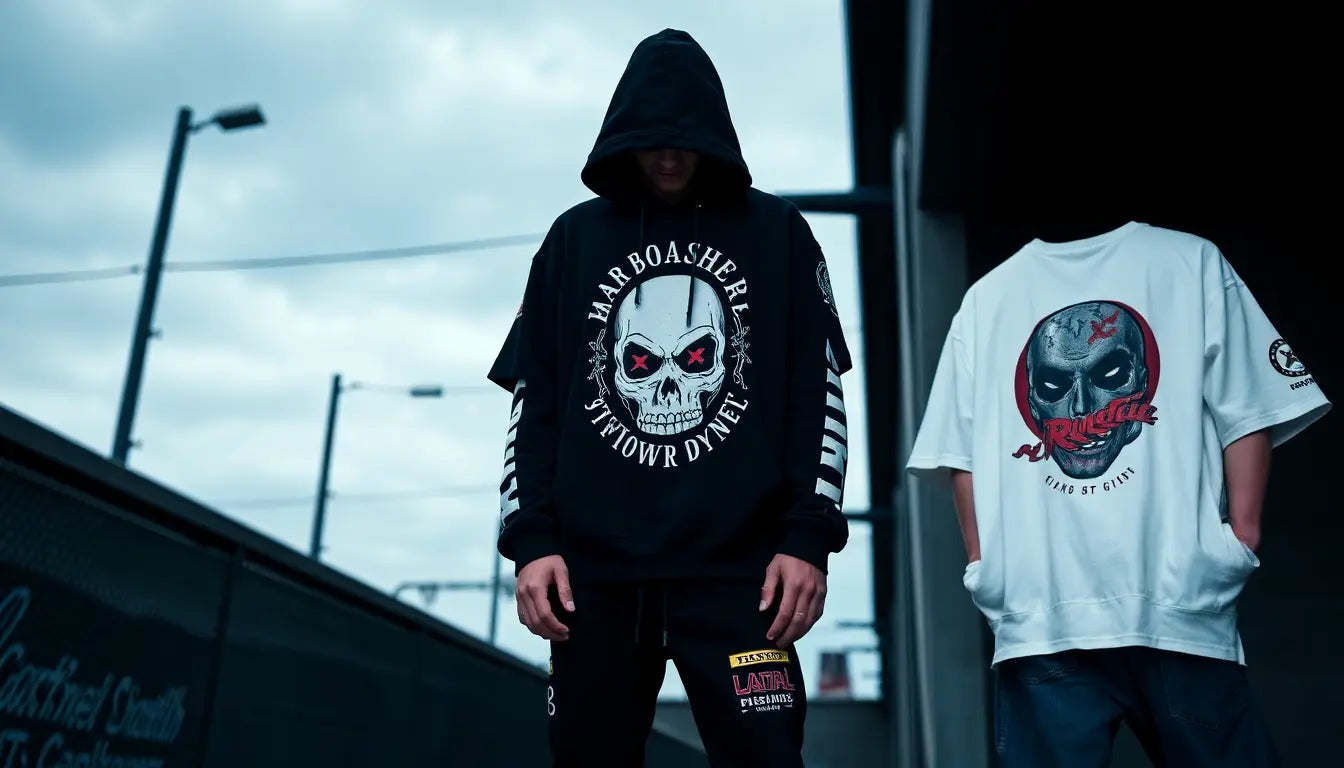
Fan Power to Fashion Labels: Tommy Lee Sparta's Merch Model and the New Blueprint for Dancehall Streetwear
Introduction
Dancehall streetwear has evolved from concert T-shirts and DIY stalls into a global—yet deeply local—fashion movement. Artists no longer treat merch as ancillary; they're turning it into a primary driver of brand, revenue, and cultural influence. Tommy Lee Sparta's merch strategy stands out as a leading example of this shift. By centering fans in design, leveraging scarcity, partnering with streetwear creatives, and using modern direct-to-fan tactics, his model has become a replicable blueprint for dancehall artists, independent labels, and fashion brands looking to capture authentic street credibility.
Why This Matters Now (Context in 2025)
- Streaming revenues have plateaued for many artists, making diversified income essential.
- Streetwear remains a primary way fans publicly signal identity; limited drops generate cultural moments.
- Consumers in 2025 expect ethical, well-made products and transparent supply chains.
- Fan communities have migrated to decentralized channels where artists can meaningfully co-create and monetize.
In this environment, Tommy Lee Sparta's approach offers more than catchy merch: it provides a playbook for converting cultural capital into sustainable fashion enterprises that honor dancehall heritage.
Tommy Lee Sparta: From Stage Persona to Streetwear Cred
Tommy Lee Sparta's brand translates his music persona into visual symbols, slogans, and apparel that carry narrative weight. The effect happens because each piece feels like a chapter of a story fans helped write. Key characteristics of his approach include fast, reactive marketing aligned with music releases, limited and serialized runs that drive urgency, and active fan participation in design choices.
Core Components of the Merch Blueprint
- Fan-led design co-creation — Fans aren't just buyers; they vote, submit designs, and beta-test samples.
- Scarcity and storytelling — Limited editions tied to music drops or milestones increase desirability and resale value.
- Designer collaborations — Collaborations with true streetwear designers add fashion legitimacy.
- Direct-to-fan sales and data ownership — Selling on owned channels preserves margins and fan data for future drops.
- Event-driven experiences — Pop-ups, meet-and-greets, and launch events make merch a social ritual.
- Verification and resale strategy — Authentication systems for limited pieces and monitored resale markets sustain brand prestige.
How Fans Become Co-Creators: Tactics That Work
Embedding fans in the creative lifecycle builds emotional ownership. Practical tactics include:
- Design contests with real incentives like royalties or a percentage of sales.
- Social polls to choose colorways, taglines, or which lyric appears on a hoodie.
- Alpha drops to small fan cohorts for feedback before mass production.
- VIP channels on community platforms where superfans can preview prototypes and offer iterative input.
When implemented consistently, these tactics convert casual listeners into brand ambassadors who amplify launches organically.
Step-by-Step Launch Mechanics: Anatomy of a Successful Drop
-
Pre-Launch Planning (6-8 weeks)
- Define objectives: revenue target, engagement metrics, and brand goals.
- Confirm supply chain, print runs, and quality control checks.
- Start fan engagement: polls, design calls, and teaser art.
- Set pricing tiers and decide on numbered editions or exclusive bundles.
-
Tease Phase (2-3 weeks)
- Release short videos linking a lyric, beat, or dance move to the upcoming piece.
- Open pre-registration or waitlist for early access.
- Use influencers and micro-influencers within dancehall and streetwear niches to hint at the drop.
-
Reveal and Engagement (1 week)
- Share lookbooks, mockups, and size guides.
- Host live Q and A sessions with designers and fans.
- Activate limited pre-orders for numbered pieces or signed editions.
-
Launch Day
- Open sales in a single time window to create a moment.
- Use scarcity triggers: live counters, sold-out tags, and serial numbers.
- Share behind-the-scenes content and customer reactions in real time.
-
Post-Launch Sustaining
- Feature user-generated content and resell highlights.
- Collect feedback and announce roadmap for restocks or follow-ups.
- Monitor secondary market pricing and adapt future scarcity.
Pricing, Margins, and Revenue Models
Designing profitable merch requires balancing aspirational pricing with cultural accessibility. Consider the following frameworks:
- Tiered Pricing: Entry-level tees, mid-tier hoodies, premium limited pieces with serial numbers and certificates of authenticity.
- Bundles: Combine music, tickets, and merch to boost average order value.
- Subscription Drops: Fan clubs that receive exclusive periodic drops or first access for a fee.
- Collaborative Profit-Sharing: Offer designers and fan winners percentage points to incentivize promotion.
Typical gross margins for artist merch can range from 40 to 70 percent depending on production scale, direct sales, and fulfillment costs. Always model scenarios including returns, international shipping, and payment processing fees.
Manufacturing, Quality, and Sustainability
In 2025, consumers expect durable products and ethical practices. Steps to ensure quality and sustainability:
- Choose certified factories with transparent labor practices.
- Use on-demand printing for low-risk colorways and test runs.
- Source sustainable materials when feasible: organic cotton, recycled polyester, low-impact dyes.
- Offer clear care instructions and sizing charts to reduce returns.
- Consider limited runs to avoid overproduction and maintain scarcity.
Packaging and Unboxing as Brand Moments
Packaging is the first physical interaction fans have with your brand. Invest in an unboxing experience that reinforces value:
- Custom tissue paper, serialized hangtags, and thank-you notes with artist signatures.
- QR codes linking to exclusive content: behind-the-scenes videos, playlists, or AR filters.
- Eco-friendly materials that align with sustainability messaging.
Verification, Authenticity, and the Resale Market
Limited-run streetwear often feeds a secondary market. Protect brand integrity with verification systems:
- Physical authentication: numbered serial tags, holographic seals, artist signatures.
- Digital authentication: NFC chips in labels or blockchain-backed certificates for high-value pieces.
- Official reseller partnerships to control pricing and visibility.
- Monitoring tools to track resale listings and takedown fake or unauthorized product pages.
Tech Stack and Platforms (Practical Recommendations)
Choose technologies that scale and put fans first. Example stack ideas:
- E-commerce: Shopify or WooCommerce for owned stores; use headless solutions for custom apps.
- On-demand manufacturing: Printful, Printify, or regional screen-print houses for small runs.
- Fulfillment: ShipStation, Easyship, or local 3PLs for global reach.
- Email and CRM: Klaviyo for segmented campaigns; integrate with Shopify customer data.
- Community platforms: Discord, Telegram, or Circle for co-creation and VIP access.
- Payments: Stripe, PayPal, and localized payment options for target markets.
- Analytics: Google Analytics 4, Shopify reports, and custom dashboards for pre-order and conversion metrics.
Legal, IP, and Contract Considerations
Protecting intellectual property and defining clear contracts is essential:
- Register trademarks for logos and unique slogans where you sell merch.
- Use clear licensing agreements with collaborating designers, specifying royalties and rights.
- Include terms of sale that cover returns, shipping policies, and authenticity guarantees.
- For numbered or NFT-linked products, document provenance and buyer rights.
Marketing and Growth Strategies
Marketing for dancehall streetwear blends music promotion, culture storytelling, and data-driven advertising:
- Align merch drops with music releases, tours, or cultural moments to amplify reach.
- Use targeted social ad campaigns focusing on lookalike audiences and engagement-based retargeting.
- Collaborate with streetwear editors, local boutiques, and cultural tastemakers for earned coverage.
- Activate grassroots marketing via community leaders and fan ambassadors in key cities.
- Leverage TikTok and Instagram Reels with dance challenges tied to the new designs.
Community Governance and Reward Systems
To keep fan involvement sustainable, set clear rules and incentives:
- Points or reputation systems for contributors who design, moderate, or recruit members.
- Exclusive tiers with early access, private events, and limited merch allocations.
- Transparent roadmaps showing how fan input influences product decisions.
Global Expansion and Localization
Dancehall is global, but merch must adapt to local preferences and sizing. Consider:
- Localized size charts and model imagery for each region.
- Regional micro-drops to test new designs and reduce shipping friction.
- Partnering with local manufacturers to reduce lead times and import costs.
- Translations and culturally-relevant collabs for specific markets.
Metrics and KPIs to Track
Measure both financial and community health metrics:
- Conversion rate from traffic to purchase, and from pre-registrations to buyers.
- Average order value and repeat purchase rate.
- Engagement metrics in community channels: active members, UGC submissions, poll participation.
- Sell-through rate of inventory and secondary market pricing trends.
- Customer satisfaction measured via NPS and return rates.
Budget Example: Small Artist Capsule Drop
Illustrative budget for a 250-piece capsule (estimates):
- Design and sample production: 800 to 1,500 USD
- Manufacturing (250 pieces, mid-quality tees and hoodies): 2,500 to 5,000 USD
- Packaging and tags: 400 to 800 USD
- Marketing and influencer seeding: 1,000 to 3,000 USD
- Fulfillment and shipping buffer: 500 to 1,500 USD
- Total estimated: 5,200 to 11,800 USD
Price accordingly to hit desired margins; for example, charging 40 to 60 USD for hoodies and 25 to 35 USD for tees can yield healthy returns while remaining accessible.
Pitfalls and How to Avoid Them
- Poor quality: Leads to reputation damage. Always sample and inspect before full runs.
- Overproduction: Avoid large unsold inventories by using pre-orders and small runs.
- Inauthentic collaborations: Partner only with creatives who understand dancehall culture; forced collabs alienate fans.
- Ignoring logistics: High shipping costs and long delivery times frustrate buyers. Communicate transparently.
- Weak community governance: If fans feel ignored, they’ll disengage. Close the feedback loop.
Advanced Tactics: Loyalty NFTs, AR Try-Ons, and Phygital Experiences
For teams ready to innovate beyond apparel, consider phygital and digital add-ons:
- Limited-edition NFTs that grant early access or lifetime discounts to merch holders.
- Augmented reality try-on filters for Instagram and Snapchat to increase online conversion.
- Phygital bundles: a physical hoodie plus a redeemable token for an exclusive virtual event or private track.
Use these judiciously to add value rather than distract from core product quality and community rapport.
Case Study: Hypothetical Drop with Metrics
Scenario: 250-piece drop, 4-week campaign. Results might look like:
- Pre-registrations: 3,200 fans
- Launch-day traffic spike: 12,500 visits
- Conversion rate: 6% (resulting in 750 orders across product tiers, including signed and unsigned pieces)
- Average order value: 58 USD
- Gross revenue: ~43,500 USD
- Net after costs and fees: variable, but artist retains majority when selling direct
This hypothetical shows how small runs and smart marketing can outperform expectations when community engagement is high.
SEO and Content Strategy to Amplify Reach
To ensure the story of your merch and the cultural context reaches fans and media, follow these SEO best practices:
- Use keyword clusters: primary (e.g., "Tommy Lee Sparta merch"), secondary (e.g., "dancehall streetwear"), and long-tail (e.g., "limited edition dancehall hoodie 2025").
- Create rich storytelling content: behind-the-scenes posts, designer spotlights, and fan profiles increase dwell time.
- Optimize product pages with high-quality images, size guides, and schema markup for products and events.
- Publish launch recaps and resale highlights to keep content fresh and relevant.
- Leverage backlinks from fashion sites, music blogs, and local press for authority signals.
Frequently Asked Questions
- Q: How many pieces should a first capsule have? A: Start small: 50 to 300 pieces depending on demand and budget.
- Q: Are on-demand printers a good long-term option? A: Yes for testing and low-risk colorways; for high-volume or premium products, partner with vetted manufacturers.
- Q: How do I keep authenticity while scaling? A: Maintain fan input channels, preserve limited runs, and collaborate with designers who respect the culture.
- Q: Should we use NFTs? A: NFTs can add utility if implemented for real-world perks and gentle scarcity, but they should not replace product quality or community trust.
Resources and Next Steps
If you want to start building a fan-first merch program inspired by Tommy Lee Sparta, begin with these immediate actions:
- Create a two-page roadmap: one for a 3-month capsule and one for a 12-month merch calendar tied to music and events.
- Open a fan input channel and schedule the first design poll within two weeks.
- Order material samples and produce one prototype before committing to a run.
- Partner with a fulfillment provider that offers international shipping and transparent fees.
- Draft standard agreements for designers and collaborators to clarify rights and splits.
Conclusion
Tommy Lee Sparta's merch model demonstrates how the intersection of music, community, and streetwear can produce both cultural impact and sustainable revenue. By centering fans, using scarcity intelligently, and investing in quality and authenticity, dancehall artists and labels can create fashion that resonates globally while staying true to the movement’s roots. The blueprint is not a one-size-fits-all; it requires cultural sensitivity, operational rigor, and genuine community engagement. But for those who commit, the reward is a merch program that does more than sell clothing: it builds culture.
Ready to put this blueprint into action? Start small, listen loudly, and iterate fast. When fans feel ownership, the merch stops being a product and becomes the movement itself.



